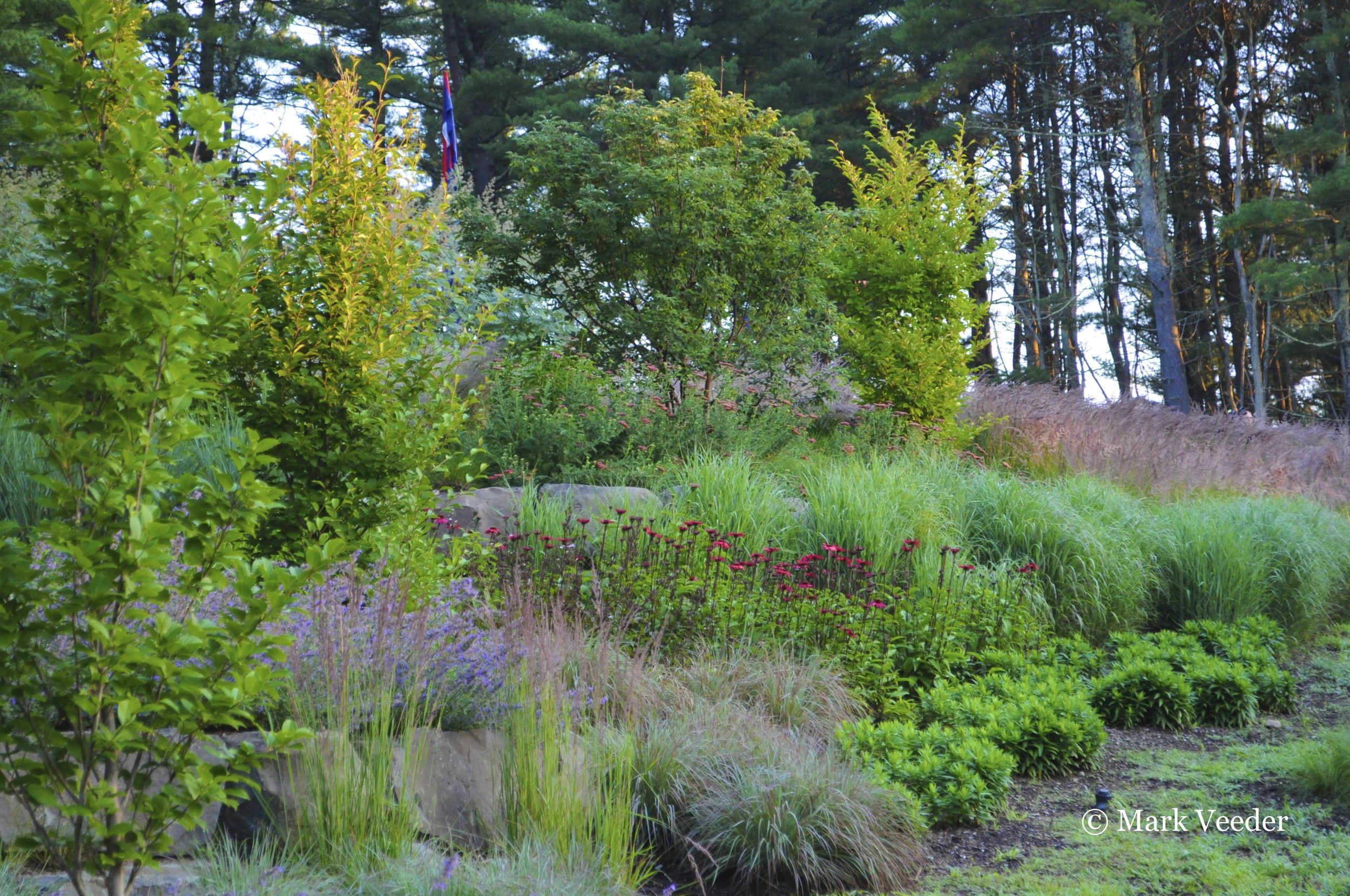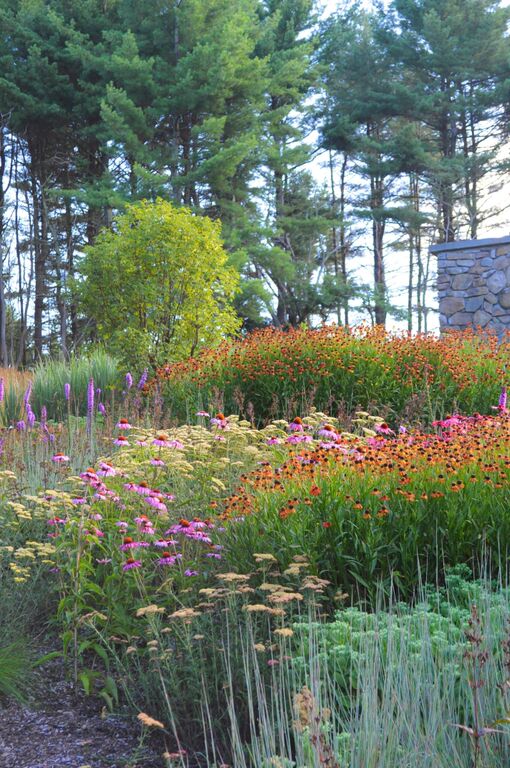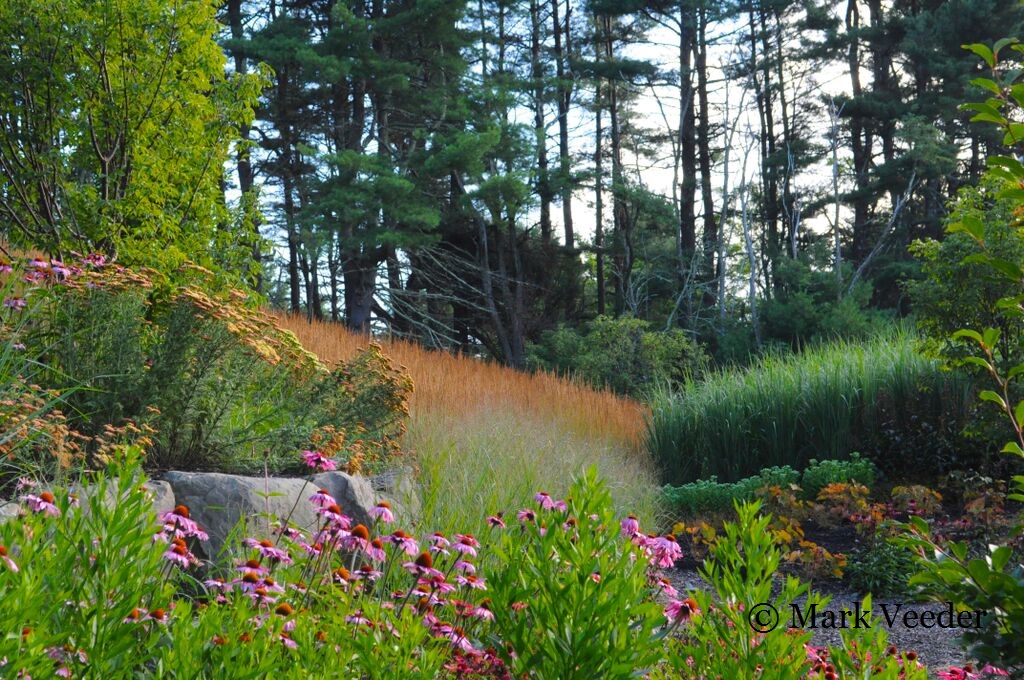Anatomy of a Garden: Stone Arches
Although the winters can be long and snowy, the cooler summers (warm days and cool nights) are perfect for herbaceous perennials and woody plants hardy enough to withstand the climate (Zone 5B to Zone 6A) at Stone Arches. Epimediums, ferns, astilbes, and woodland perennials seem healthier and larger than the equivalents in warmer climates. At the same time warm season, full sun perennials and grasses can be accommodated as well. Stone Arches is deer central, but Mark installed a high deer fence around the perimeter of the property.
Set in strong drifts, the hillside planting behind the glasshouse is reminiscent of Oehme, van Sweden & Associates' signature style and Piet Oudolf's earlier work, but differentiates itself in its addition of trees. Mark carefully chose trees with multi-seasonal interest that complements the herbaceous layer - Stewartia pseudocamellia and Acer griseum (paperbark maple). With their moderate growth, these trees do not increase rapidly enough to shade out the perennials that prefer more light. Seen somewhat in the background, the prayer flags at Dan Hinkley's Windcliff garden near Seattle, Washington State, inspired Mark to do the same.
In grand planting schemes, some plants need monitoring because their declining health or dieback can lead to noticeable visual gaps. Notoriously short-lived, achilleas are tricky. However the site's light sandy soil should suit these achilleas, although those gardening on clay may struggle to overwinter them. Their corymbs echo the sedums in the lower right corner, and contrast well with Echinacea purpurea 'Magnus', Helenium 'Dancing Flames' and Liatris spicata. Schizachyrium scoparium [Blue Heaven] = "MinnblueA" is beginning to send out its inflorescences.










